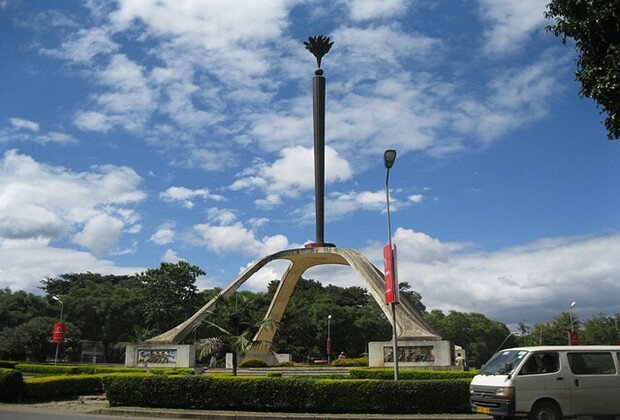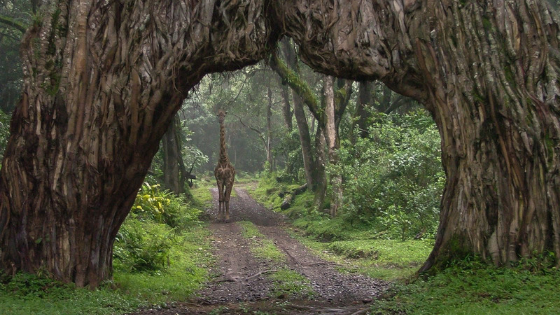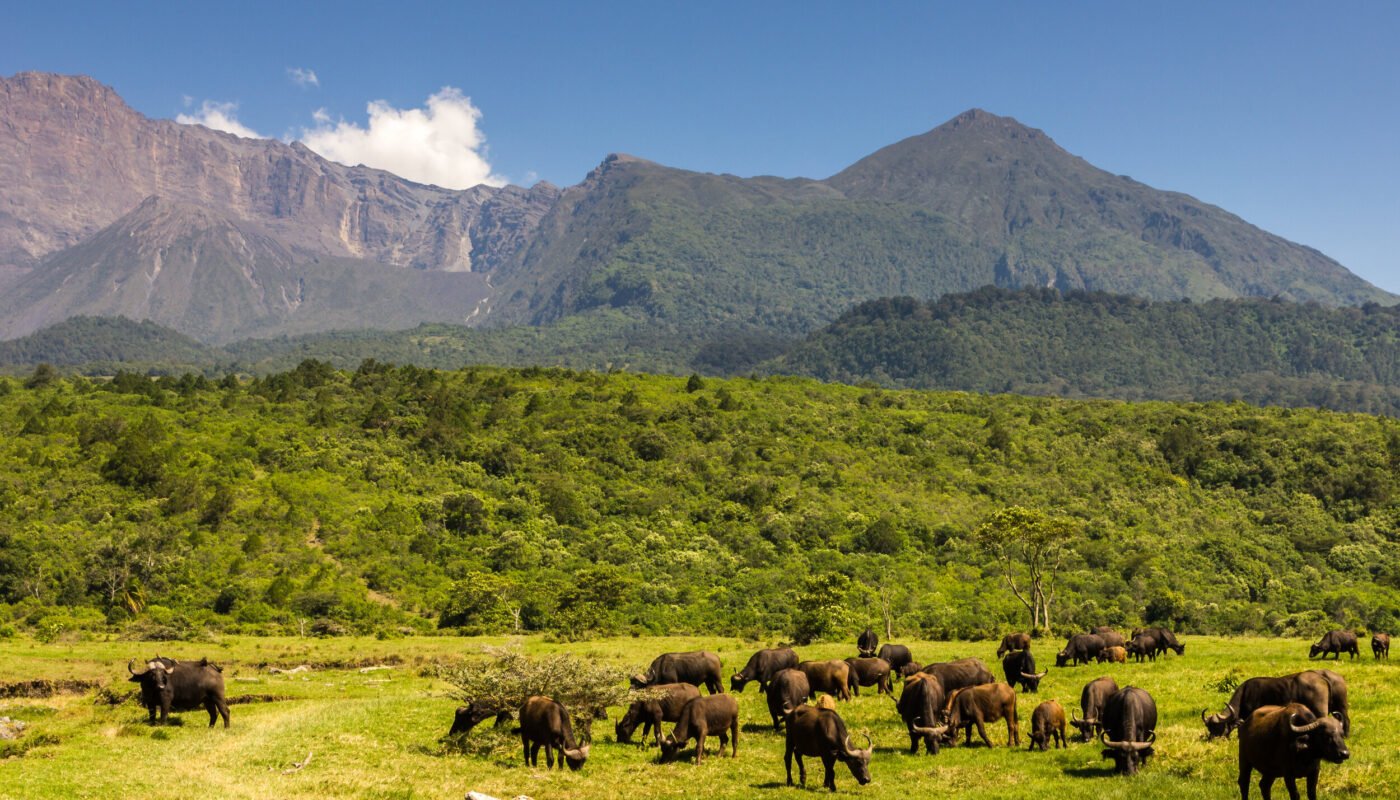Nestled at the foot of Mount Meru, Arusha is often dubbed the “Safari Capital of Tanzania.” With its breathtaking landscapes, diverse wildlife, and proximity to some of the world’s most famous national parks, Arusha serves as a gateway to unforgettable safari experiences. This article will explore Arusha’s rich history, cultural heritage, and the many attractions that make it a must-visit destination for travelers seeking adventure in Tanzania.
1. A Brief History of Arusha
Early History
Arusha’s history dates back to the 19th century when it was primarily inhabited by the Arusha people, a subgroup of the Maasai. The area was known for its fertile soil and was primarily used for agriculture. The region began to attract attention from European explorers and missionaries in the late 1800s, leading to increased interactions between the local population and foreign settlers.
Colonial Era
During the German colonial period in the late 19th and early 20th centuries, Arusha’s development accelerated. The Germans established coffee plantations in the area, leading to economic growth and infrastructure development. Following World War I, the British took control of the region, and Arusha continued to grow as a commercial and administrative center.
Post-Independence
After Tanzania gained independence in 1961, Arusha became the political and economic hub of the country. It hosted several important events, including the Arusha Declaration in 1967, which laid the foundation for socialism in Tanzania. Over the years, the city has evolved into a vibrant urban center, balancing modernity with its rich cultural heritage.
2. Arusha’s Location and Climate
Geographical Significance
Arusha is located in northern Tanzania, approximately 500 kilometers from Dar es Salaam, the country’s largest city. It lies at an altitude of 1,400 meters (4,593 feet) above sea level, providing a mild climate that contrasts with the tropical heat of coastal regions. The city’s location makes it an ideal base for exploring nearby national parks, including Serengeti National Park, Ngorongoro Crater, Lake Manyara, and Tarangire National Park.
Climate Overview
Arusha enjoys a temperate climate characterized by two main seasons: the dry season and the rainy season. The dry season, from June to October, features pleasant temperatures and clear skies, making it the ideal time for safari enthusiasts. The rainy season, from November to May, brings lush vegetation and vibrant landscapes but can also lead to challenging road conditions in some areas.
3. Arusha: The Gateway to National Parks
Arusha’s strategic location as a gateway to Tanzania’s national parks is one of its primary attractions. Visitors can easily access world-renowned parks that offer diverse wildlife experiences and stunning landscapes.
Serengeti National Park
The Serengeti is perhaps the most famous national park in Tanzania, known for its vast savannahs and the Great Migration, where millions of wildebeest and zebras traverse the plains in search of greener pastures. Arusha serves as the starting point for many safari tours heading to this iconic park. Visitors can enjoy guided game drives, hot air balloon safaris, and even cultural encounters with the Maasai people.
Ngorongoro Crater
The Ngorongoro Crater, a UNESCO World Heritage Site, is another must-visit destination for wildlife enthusiasts. This unique geological formation is home to a variety of animals, including lions, elephants, and rhinos. Visitors can take a day trip from Arusha to explore the crater, enjoying stunning views and exceptional wildlife viewing opportunities.
Tarangire National Park
Tarangire National Park is renowned for its large elephant herds and majestic baobab trees. Located about 120 kilometers from Arusha, Tarangire is a fantastic destination for those seeking a more off-the-beaten-path experience. Visitors can embark on game drives, birdwatching, and guided walking safaris, all while enjoying the park’s diverse ecosystems.
Lake Manyara National Park
Lake Manyara National Park is another gem located close to Arusha. Known for its beautiful landscapes and diverse wildlife, the park is famous for its tree-climbing lions and vast flocks of flamingos. The park’s unique ecosystem, which includes a soda lake and dense forests, offers excellent opportunities for birdwatching and wildlife photography.
4. Cultural Experiences in Arusha
While Arusha is primarily known for its safari opportunities, it also offers rich cultural experiences that allow visitors to connect with the local community and learn about Tanzania’s diverse heritage.
Maasai Culture
The Maasai people, renowned for their vibrant culture and traditional lifestyles, are an integral part of Arusha’s identity. Many tour operators offer cultural tours that allow visitors to visit Maasai villages, interact with the locals, and learn about their customs, traditions, and way of life. Guests can participate in traditional dances, learn about beadwork, and even sample local dishes.
Arusha Cultural Heritage Centre
The Arusha Cultural Heritage Centre is an excellent place to explore Tanzania’s history and diverse cultures. The center features a museum, art gallery, and a shop selling local crafts and souvenirs. Visitors can learn about the various ethnic groups in Tanzania, their traditions, and their contributions to the country’s cultural tapestry.
Local Markets
Exploring Arusha’s local markets is a fantastic way to experience the city’s vibrant atmosphere. The Central Market and Kariakoo Market offer an array of fresh produce, spices, textiles, and handicrafts. Bargaining is part of the experience, and visitors can find unique souvenirs to take home while supporting local artisans.
5. Adventure Activities in Arusha
Arusha is not just about safaris; it also offers a range of adventure activities for those seeking thrills and unique experiences.
Mount Meru Trekking
Mount Meru, standing at 4,566 meters (14,980 feet), is the second-highest peak in Tanzania and offers an excellent trekking experience for adventurers. The trek to the summit takes about four to five days and provides stunning views of the surrounding landscape, including the majestic Kilimanjaro on a clear day. Trekking Mount Meru is often recommended as a training ground for those planning to summit Kilimanjaro.
Hot Air Balloon Safaris
For a truly unique perspective of the African savannah, consider taking a hot air balloon safari over the Serengeti or Tarangire National Park. As you drift silently above the landscape, you’ll have the opportunity to spot wildlife from above and enjoy breathtaking views of the scenery. Most balloon safaris conclude with a champagne breakfast in the bush, making for a memorable experience.
Cultural Tours and Community Projects
Several organizations in Arusha offer cultural tours that support local communities. Visitors can engage in community projects, such as building schools or supporting women’s cooperatives. These experiences not only provide a deeper understanding of local life but also contribute positively to the community.
6. Accommodations in Arusha
Arusha offers a variety of accommodations to suit every budget and preference, from luxury lodges to budget-friendly hostels.
Luxury Lodges and Hotels
For those seeking a touch of luxury, several high-end lodges and hotels are located within and around Arusha. These accommodations often feature stunning views, fine dining, and excellent service. Some popular options include:
- Arusha Coffee Lodge: Set amidst coffee plantations, this lodge offers a unique experience, with beautifully designed rooms and an on-site coffee shop.
- Kigongoni Lodge: Located on the outskirts of Arusha, Kigongoni Lodge provides stunning views of Mount Meru and offers a tranquil setting with luxurious amenities.
Mid-Range Options
Travelers looking for comfortable yet affordable options will find several mid-range hotels and lodges. These often provide excellent service and amenities without breaking the bank. Popular choices include:
- Mount Meru Hotel: A well-known hotel with a variety of rooms, dining options, and a swimming pool, conveniently located near the city center.
- The Arusha Hotel: A historic hotel that combines colonial charm with modern amenities, providing easy access to local attractions.
Budget Accommodations
For budget-conscious travelers, Arusha offers a range of hostels and guesthouses. These provide basic amenities at affordable rates, making it easy to meet fellow travelers. Some options include:
- Lodge Africa: A cozy guesthouse with dormitory-style and private rooms, offering a friendly atmosphere and helpful staff.
- Kilimanjaro Backpackers: A popular backpacker hostel with a vibrant community, perfect for those looking to connect with fellow adventurers.
7. Dining in Arusha
Arusha boasts a diverse culinary scene that reflects Tanzania’s multicultural heritage. From traditional Tanzanian dishes to international cuisine, visitors are sure to find something to satisfy their taste buds.
Local Cuisine
Traditional Tanzanian dishes often feature staples such as rice, ugali (a maize porridge), and various meats and vegetables. Some popular local dishes to try include:
- Nyama Choma: Grilled meat, often served with ugali and a side of vegetables.
- Samosas: Fried or baked pastries filled with meat or vegetables, commonly found in local markets and restaurants.
- Zanzibar Pizza: A unique street food originating from Zanzibar, this savory pastry is filled with a mixture of meat, vegetables, and eggs, cooked on a hot pan.
International Options
In addition to local cuisine, Arusha offers a variety of international dining options. From Italian and Indian to Middle Eastern and Chinese, visitors can enjoy diverse culinary experiences. Some popular restaurants include:
- The Blue Heron: A charming restaurant known for its extensive menu and beautiful garden setting, perfect for enjoying a leisurely meal.
- Shanga Shangaa: A restaurant and workshop that supports local artisans, serving delicious meals while showcasing handmade crafts.
8. Shopping in Arusha
Shopping in Arusha is a delightful experience, with numerous opportunities to find unique souvenirs and local crafts.
Local Crafts and Art
Arusha is home to many artisans who create beautiful crafts, including wood carvings, beadwork, and textiles. The Cultural Heritage Centre and Maasai Market are excellent places to shop for authentic Tanzanian crafts and support local artists.
Souvenirs and Gifts
Visitors can find a variety of souvenirs in Arusha, from traditional Maasai jewelry to handmade baskets and paintings. Exploring the local markets is a great way to discover unique items and interact with local vendors.
9. Conclusion
Arusha is more than just a gateway to Tanzania’s national parks; it is a vibrant city rich in history, culture, and adventure. Whether you’re embarking on a thrilling safari, exploring the local culture, or enjoying the stunning landscapes, Arusha offers a diverse range of experiences for travelers.
As the “Safari Capital of Tanzania,” Arusha continues to attract visitors from around the world, eager to witness the beauty of nature and the warmth of Tanzanian hospitality. Whether you’re an adventure seeker, a cultural enthusiast, or a wildlife lover, Arusha is sure to leave a lasting impression and inspire unforgettable memories.
Call to Action
Plan your next adventure in Arusha and experience the magic of Tanzania for yourself. Whether you’re looking to embark on a safari, immerse yourself in local culture, or simply relax in a beautiful setting, Arusha has something for everyone. Book your trip today and discover why this city is truly the Safari Capital of Tanzania!



